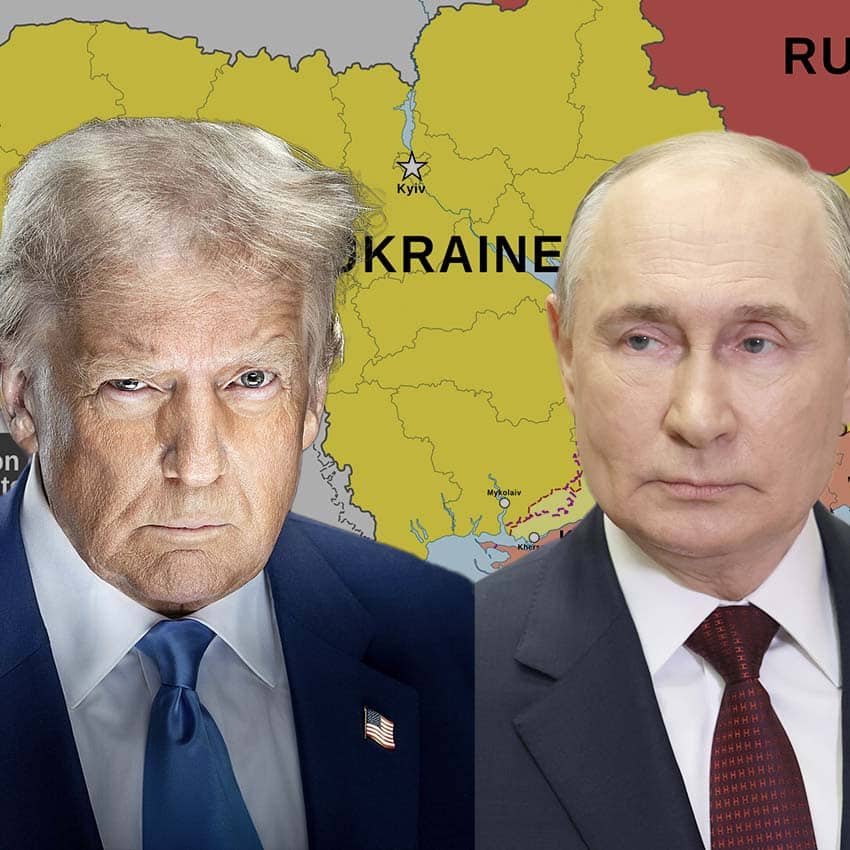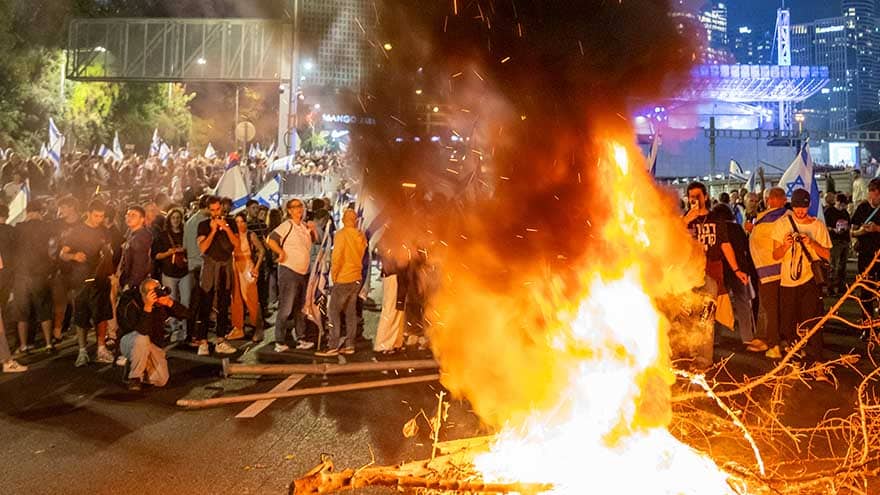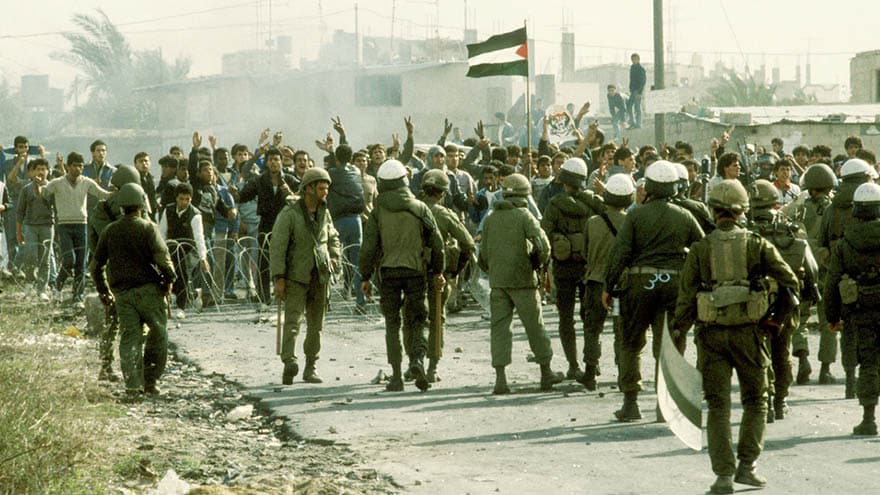After months of global discussions regarding the Russia-Ukraine war—including talks between President Donald Trump and his Ukrainian counterpart Volodymyr Zelensky, between Zelensky and NATO, and between representatives of both sides in Saudi Arabia— the decisive moment arrived: a phone call between Trump and Russian President Vladimir Putin. The conversation, which took place on Tuesday, March 18, had already sparked speculation beforehand, as the American president hinted at it during his return flight from Florida to Washington aboard Air Force One after ordering strikes against the Houthis in Yemen.
Following all the anticipation and predictions, the “results” of the call were released shortly after it ended: a brief post by Trump on Truth Social, a more detailed report from White House Press Secretary Caroline Leavitt, and an extensive statement from the Kremlin.
The White House statement began by emphasizing the need for peace and a ceasefire in Ukraine. Trump proposed a 30-day truce, which Ukraine accepted, while Putin insisted on “total peace”—a stance consistent with his previous statements. This suggests that Trump is aligning with the Kremlin’s position on comprehensively resolving the conflict. The statement continued by stressing the importance of strengthening U.S.-Russia bilateral relations, acknowledging the heavy toll the war has taken on both nations—in terms of both lives and finances—and the need to end it for the benefit of the people on both sides of the border.
Washington’s statement echoed Trump’s familiar rhetoric that the war would never have broken out under his administration. This claim takes on added significance in light of the agreements with Putin. It lays the groundwork for significant concessions from Ukraine while questioning the legitimacy and funding of the war. Among the notable agreements were a ceasefire on infrastructure and energy facilities— a matter more critical for Russia than for Ukraine— and cooperation in the Black Sea and the Middle East to stabilize the situation.
An intriguing point, absent from the Kremlin’s statement, was the agreement between the two leaders that “Iran will never have the capability to destroy Israel.” The statement concluded with a pledge to improve U.S.-Russia relations.
Selective Agreements from the Kremlin
The Kremlin presented the conversation as a “detailed and candid discussion” about the situation in Ukraine. At first glance, it seemed that Putin was merely responding to Trump’s proposals. However, a deeper analysis reveals a selective agreement to elements that serve Russian interests.
Putin thanked Trump for his efforts to end hostilities but stressed that peace must be “comprehensive, reliable, and lasting,” taking into account the “roots of the problem”—NATO expansion, the “Nazification” of Ukraine, and Russia’s security interests. He rejected the 30-day ceasefire, arguing that it must end Western military aid to Ukraine, citing “a history of agreement violations” by Kyiv (e.g., the Minsk Agreements). However, Putin did agree to Trump’s request to show leniency toward Ukrainian soldiers surrounded in Kursk, committing to treat them by international and Russian law. This move reinforces Russia’s narrative of territorial control.
Furthermore, Putin agreed to a ceasefire on energy infrastructure and ordered its immediate implementation—indicating its strategic importance to Russia. The Kremlin’s statement also announced a prisoner exchange (175 from each side) scheduled for the day after the call and that Putin would release 23 wounded Ukrainian prisoners as a “gesture of goodwill.”
The leaders also discussed additional geopolitical issues concerning the Middle East and the Red Sea. Trump previously stated that Houthi actions would be considered direct Iranian operations—an implicit message to Putin to relay to Tehran. Unlike the White House statement, Israel was not mentioned in the Kremlin’s announcement, though it did emphasize cooperation in preventing the proliferation of nuclear weapons.

Ice Hockey as a Geopolitical Mirror
Toward the end of the Kremlin’s statement, Putin raised a seemingly innocuous sports proposal—ice hockey games between the U.S. and Canada’s National Hockey League (NHL) and the Russia-led Kontinental Hockey League (KHL), which includes teams from Russia, Kazakhstan, Belarus, and China. Trump accepted the idea, but behind this gesture lies a more profound geopolitical vision reflecting the aspirations of both leaders and their outlook on a new world order.
The proposal is no coincidence—it serves as a microcosm of international relations as perceived by Trump and Putin. The choice of ice hockey is deliberate: for Putin, it symbolizes Russian pride and strength, while for Trump, it aligns with his love of competition and spectacle. The real significance, however, lies in the leagues themselves. The NHL’s inclusion echoes Trump’s past remarks about Canada as “the 51st state,” reinforcing his vision of an expanded North America under U.S. influence. Meanwhile, the KHL positions Russia as an empire exerting control over its backyard—just as Trump views Canada. The inclusion of China sends an additional message: Putin is a bridge between the U.S. and the Asian superpower, granting the Russian president leverage in the global power triangle.
The proposal also reflects a vision of a bipolar world. Trump is shifting away from a unipolar American hegemony in favor of an “America First” approach, while Putin sees Russia as an equal power. The absence of NATO in this framework is no accident—both leaders prefer direct negotiations between significant powers over multilateral institutions.
China’s presence in the KHL signals Putin’s willingness to incorporate additional players, but under Russian leadership, which could ease tensions between Washington and Beijing while bolstering his role as a mediator. If these hockey games occur, they will serve as propaganda tools: a diplomatic victory for Trump and a demonstration of Russia’s cultural influence on Putin. However, other players—such as Ukraine, NATO, and even China—might perceive this arrangement as a division of the world that sidelines them.
The focus on sports may mask more profound disagreements, such as divergent views on Iran, which remained unresolved between the leaders’ statements. Putin’s proposal is more than a friendly gesture; it reflects a vision in which the U.S. and Russia divide global influence, acknowledging each other’s expansionist ambitions—Trump over Canada, Putin over neighboring states—while positioning the Russian leader as a central figure in relations with China. This contest is also a partnership, with the world as the playing field.
Ukraine as a Pawn
Ultimately, the conversation—which originated from the Russia-Ukraine war and was expected to focus on it—expanded into a broad global discussion encompassing almost every major player, from Iran and Israel to China and Canada, while reducing Ukraine to a secondary role. This use of Ukraine as a tool to frame a bipolar world serves the narratives of both Trump and Putin.
For Trump, the emphasis on broader geopolitical issues reinforces his “America First” policy, where Ukraine is a secondary concern compared to maintaining stable relations with Russia and addressing perceived threats like Iran. For Putin, the expanded discussion allows him to position Russia as an equal global power, negotiating with the U.S. over the entire world’s fate—while Ukraine remains a mere object on the table rather than a participant in the conversation.
This dynamic illustrates Ukraine’s weakened position: rather than sitting as an equal at the negotiating table, it is treated as territory passed between powers, divided according to the interests of two superpowers determining its fate. Trump’s acceptance of a limited ceasefire, alongside Putin’s rejection of any settlement that does not guarantee Russia’s strategic interests, highlights how both leaders are using the conflict as leverage for their broader objectives.
The Trump-Putin call revealed surprising agreements—from a ceasefire on infrastructure to cooperation in the Middle East—while exposing key divisions. While the White House emphasized its commitment to preventing Iran from destroying Israel, the Kremlin focused on preventing nuclear proliferation in general, revealing differing approaches to Tehran.
Putin’s hockey proposal exemplifies a shared ambition for a world where the two great powers divide global dominance while recognizing each other’s spheres of influence. The remaining question is whether this cooperation will lead to global stability—or further deepen rifts with players like China, Iran, and NATO.









